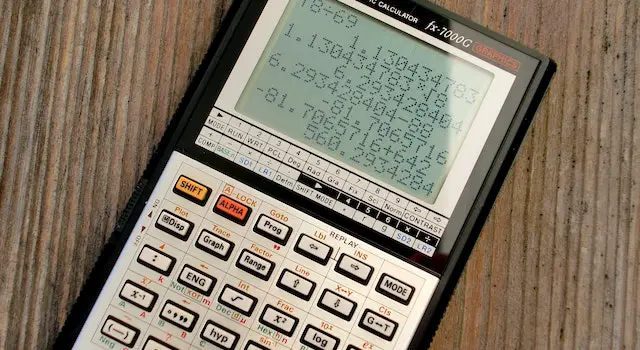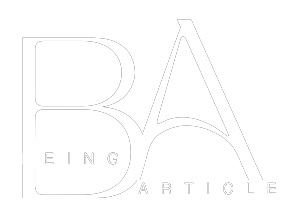How To Read Mixed Fractions In Words?
A mixed number has both a whole and a fractional part. is a skewed number. It has a whole part, 3, as well as a fractional part, 2/5. This is exactly what we mean when we read the fraction as “three and two fifths.”
Usually, when we write fractions in words, we express the numerator and denominator as numerals. But sometimes, you need to write a fraction as a word.
How do you write mixed fractions in word?
A mixed fraction is a combination of a whole number and a fraction, such as 3 1/2 or 5 3/4. It is used to represent a quantity that is not a whole number, but a combination of a whole number and a proper fraction.
Writing Mixed Fractions in Word
To write mixed fractions in Word, you can use the Equation Editor or insert a fraction and then add a whole number to it. Here are the steps for each method:
Method 1: Using the Equation Editor
- Open Microsoft Word and click on the “Insert” tab.
- Click on “Equation” in the “Symbols” section.
- In the Equation Editor, click on “Fraction” and select the type of fraction you want to use.
- Enter the whole number in front of the fraction by clicking on the “Script” button in the Equation Editor and selecting “Subscript”.
- Enter the numerator and denominator of the fraction in the Equation Editor.
- Your mixed fraction is now complete, and you can click on “Close” to exit the Equation Editor.
Method 2: Inserting a Fraction and Adding a Whole Number
- Open Microsoft Word and click on the “Insert” tab.
- Click on “Equation” in the “Symbols” section.
- In the Equation Editor, click on “Fraction” and select the type of fraction you want to use.
- Enter the numerator and denominator of the fraction in the Equation Editor.
- Type a space after the fraction and enter the whole number.
- Your mixed fraction is now complete, and you can click on “Close” to exit the Equation Editor.
Formatting Mixed Fractions in Word
After writing a mixed fraction in Word, you may want to adjust its appearance to make it more visually appealing. Here are some formatting options you can use:
- To increase or decrease the font size of the mixed fraction, select it and use the “Font size” drop-down menu in the “Home” tab.
- To change the color of the mixed fraction, select it and use the “Font color” drop-down menu in the “Home” tab.
- To center-align the mixed fraction, select it and use the “Center” alignment option in the “Paragraph” tab.
- To add a border or shading to the mixed fraction, select it and use the “Borders and Shading” option in the “Design” tab.
Hyphenation

The hyphen is an important grammatical tool that connects words and parts of words to form a single unit. It is used to connect prefixes, suffixes, nouns, and verbs. It is also used to break words over a line.
It can also be used to separate similar words with different pronunciations (homographs and fact-fans), for example, ‘recreation’ and-creation.’
Hyphenation can confuse new writers, as there are few firm rules, and dictionaries do not always agree on which words need a hyphen and which don’t. So it’s best to refer to your organization’s preferred dictionary for guidance when deciding whether a hyphen is required.
Some prefixes and suffixes require a hyphen to avoid a double letter or a misunderstanding. The hyphen links the prefix to the root word. It’s especially necessary when using a prefix or suffix that would otherwise produce an ambiguous word, such as ‘non-,’ ‘pre-,’ or ‘anti-‘, which can mean different things.
A hyphen is also needed when the last letter of a prefix or suffix is a vowel, and the root word that follows begins with that same vowel. This practice is less important if the word is well-known, but you should check a dictionary if you’re unsure how to hyphenate a particular prefix or suffix.
Compound modifiers are adjectives that modify nouns. They can be hyphenated in two ways: as a noun and as an adjective, like ’round-the-clock support’ or ‘a well-honed piece of writing.
When a compound verb is hyphenated, the hyphen appears at the end of the main part of the compound, as in “He was referred to clinic-based services.” However, the hyphen is suspended when the final part of the compound is removed.
If the hyphen appears after one of the words in a compound, then it’s a hanging hyphen, as in “He was referred to both clinic- and hospital-based services.” This is usually the easiest way to hyphenate compounds with different modifiers.
It’s a good idea to hyphenate lists of hyphenated words that share a common base, as in “ten-, twenty- and fifty-inch boards.” But if the list comprises a variety of hyphenated words or numbers that don’t share a common base, it’s best to omit the hyphen and write them separately.
Words With More Than 20 Digits
A mixed fraction combines a whole number (e.g., six and three-fifths) with a fractional part. A mixed fraction is not new, but it’s become more common in modern math. The best way to read a mixed fraction in words is by adhering to the standard rules of thumb. First, you’ll need to be clear on what the whole number means and how it fits into a larger context. Then, you’ll need to figure out how the fractional portion fits in the shuffle. A quick web search will reveal plenty of hints, but you might need extra help to ensure your work is up to scratch.
The most important rule of thumb is that the most successful words will be the ones with the least amount of confusion. You’ll also need to consider your text’s wording and its context. The biggest challenge is ensuring readers have enough information to grasp the main idea.
Words With More Than One Denominator

The best way to read a mixed fraction is to break it into smaller chunks. This will allow you to compare and contrast the denominators and better understand what each of them means. A great way to do this is with a tabletop or graphing calculator and a set of index cards. This is also a good time to practice your vocabulary. You might not have to do this for every question, but it will pay off in the long run. For example, suppose you’re answering questions about fractions with one denominator. In that case, multiplying each denominator by itself will give you a pretty accurate estimate of what each means.
When reading the mixed number out loud, begin by reading the entire number, then” and “and,” and then the fraction. For instance, for reading the mixed fraction of 3 1/2, you would say “three and one-half.” Then, when you read the fraction, repeat the number above (the number above the fraction’s bar) first, and then, say numerator (the one below the bar of fractions).
Mixed fractions, also called mixed numbers, represent a total number and one fraction. They can be read in a manner that gives the same significance as the written form that the numbers are written. Reading mixed fractions correctly is essential for understanding math issues and interacting with others.
Additionally, know that in some cases, the fraction portion of a mixed fraction may be reduced to a simpler form. To accomplish this, divide the numerator and denominator using their greatest common factor (GCF). For example, the number 4/8 could be reduced into 1/2 simply by dividing the denominator and numerator in the ratio of 4, which equals the GCF of 4 and 8. Then, after the fraction has been simplified and rearranged, it can be merged with the entire number to create a new mixed fraction.
To summarize, when reading mixed fractions in words, begin with reading the whole number, then read the “and,” and then the fraction. Be sure to pronounce the numerator and the denominator independently when reading the fraction. If the fraction is reduced, divide the numerator and denominator using their most common factor, and then join that simplified portion with the entire number to make a mixed fraction. Through experience, the ability to read mixed fractions in public will become routine.
Words With More Than One Numerator
If you have a word that has more than one numerator, it is called a mixed fraction. This differs from a mixed number, a combination of a whole number and a fraction.
A mixed fraction has a denominator and a numerator separated by a slash, similar to a regular fraction. The numerator is the number above the slash, and the denominator is the number beneath the slash. The denominator is stated first in reading words with more than one numerator, so the word 3/10 would be spelled out as three-tenths.
The digits in the numerator and denominator are pronounced the same way they appear on the number line, except for 2 and 4. So you can read a fraction like 6 2/3 as “six and two-thirds” and 18 5/4 as “sixteen and five-fourths.” These names give the words a special meaning but are still the same as saying the fractions without them.
You can also use a hyphen to separate words’ numerator and denominator, as in 6 3/5. However, you should not use a hyphen with digits higher than 20 in the numerator or denominator. These digits can lead to confusion, and adding an extra hyphen can make the fraction look less clear.
Place the cursor where you want to insert the fraction to write a mixed fraction in words. Then, in the Symbols menu, choose a Fraction design (like the ones in the example above).
Next, type the numerator in superscript and the denominator in subscript. Finally, turn on superscript by clicking the X2 button in the Home tab.
Another way to insert a mixed fraction is by using a division slash, /. This is slightly different from the forward slash and needs to be formatted correctly, so check it out in the Symbols menu.
If you have numbers greater than 1, you can use long division to convert the fraction part into a decimal, as in 6.35. This is a good practice, ensuring the decimal part stays the same.
Mixed fractions, also known as mixed numbers, represent a whole number plus a fraction. They can be read out loud in a way that conveys the same meaning as the written form of the number. Reading mixed fractions correctly is important for understanding math problems and communicating accurately with others.
To read a mixed fraction out loud, start by reading the whole number, followed by the word “and,” and then the fraction. For example, to read the mixed fraction 3 1/2, say “three and one-half.” Then, when reading the fraction, say the numerator (the number above the fraction bar) first and then the denominator (the number below the fraction bar).
How To Read Mixed Fractions Out Loud:
- 2 3/4: “two and three-fourths.”
- 4 1/3: “four and one-third.”
- 1 2/5: “one and two-fifths”
- 7 5/8: “seven and five-eighths.”
- 9 2/9: “nine and two-ninths.”
It’s also important to note that sometimes the fraction part of a mixed fraction can be simplified. To do this, divide the numerator and the denominator by their greatest common factor (GCF). For example, the fraction 4/8 can be simplified to 1/2 by dividing the numerator and denominator by 4, the GCF of 4 and 8. Once the fraction is simplified, it can be combined with the whole number to form a new mixed fraction.
How To Read A Mixed Fraction After Simplifying The Fraction:
5 2/6: “five and two-sixths.” First, simplify the fraction 2/6 by dividing the numerator and denominator by 2, which gives 1/3. Then, combine the whole number 5 with the simplified fraction 1/3 to form the new mixed fraction 5 1/3, read as “five and one-third.”
In summary, to read mixed fractions in words, start by reading the whole number, followed by “and,” and then the fraction. Make sure to say the numerator and denominator separately when reading the fraction. If the fraction can be simplified, divide the numerator and denominator by their greatest common factor. Then, combine the simplified fraction with the whole number to form a new mixed fraction. With practice, reading mixed fractions out loud will become second nature.
FAQ’s
What is a mixed number in fractions?
A mixed number is what? A mixed number is one that includes both a proper fraction and a full number.
What is a mixed fraction for kids?
A mixed number combines an integer (whole number) with a fraction. It is also sometimes referred to as a mixed fraction (part of a whole number).
What is a mixed number example?
Mixed numbers can be written either way, for example, 5 and 3/4 or 534. The mixed number’s fractional component needs to be a legal fraction (less than one whole). In a correct fraction, such as 37 or 1115, the numerator (top number) is smaller than the denominator.
What are the 3 types of fraction?
There are three main categories of fractions in mathematics. Proper fractions, incorrect fractions, and mixed fractions are these three types. The expressions with a numerator and a denominator are called fractions.
What is mixed and improper fraction?
Incorrect fractions and mixed numbers have the same value but are written differently. Whole numbers are displayed separately from fractions in mixed numbers. The numerator is larger than the denominator and complete numbers are not displayed separately in improper fractions.


















